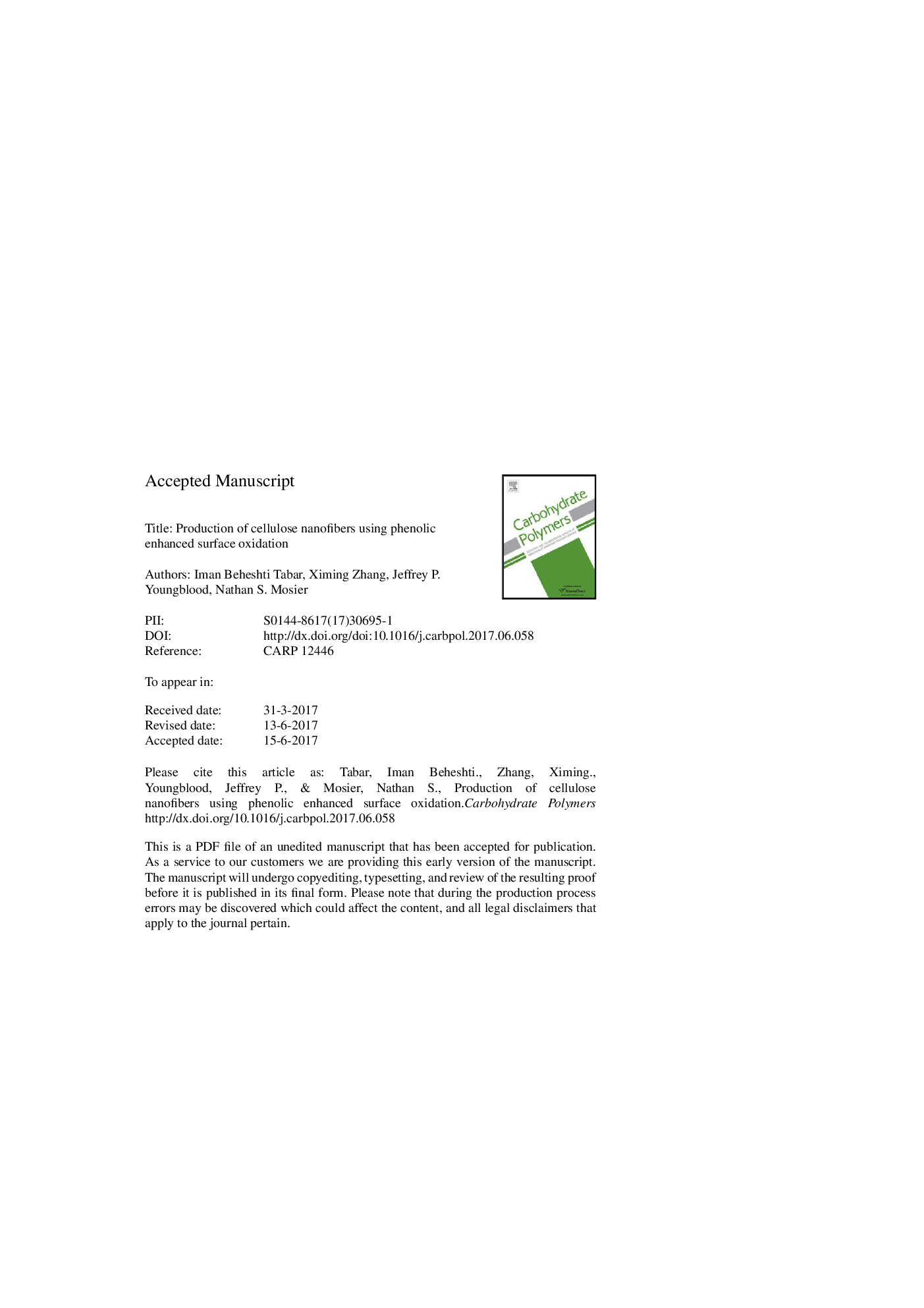| Article ID | Journal | Published Year | Pages | File Type |
|---|---|---|---|---|
| 5156791 | Carbohydrate Polymers | 2017 | 27 Pages |
Abstract
In this study we demonstrate that lignin monomers formed as byproducts of pulping or bioprocessing of lignocellulosic biomass is an effective enhancer to oxidize cellulose surfaces with ozone for the production of cellulose nanofibers (CNF). Never dried softwood pulp with minimum mercerization was enzymatically treated leading to a homogeneous pulp slurry with a higher reactivity. The slurry was oxidized by ozone gas in the presence of syringic acid, a lignin degradation model compound, as an oxidation enhancer at room temperature and pH 11. Transmission electron microscopy (TEM) observations showed that stable CNF bundles with 3-10Â nm widths and lengths >100Â nm were obtained after ultrasonication of the oxidized product in water. Extensive characterization of the new CNF films revealed the nanofibers had carboxylate content similar to conventional carboxylated cellulose prepared by TEMPO-mediated oxidation. Based on NMR spectra, chemical conversion of the syringic acid during oxidation is proposed.
Keywords
Related Topics
Physical Sciences and Engineering
Chemistry
Organic Chemistry
Authors
Iman Beheshti Tabar, Ximing Zhang, Jeffrey P. Youngblood, Nathan S. Mosier,
